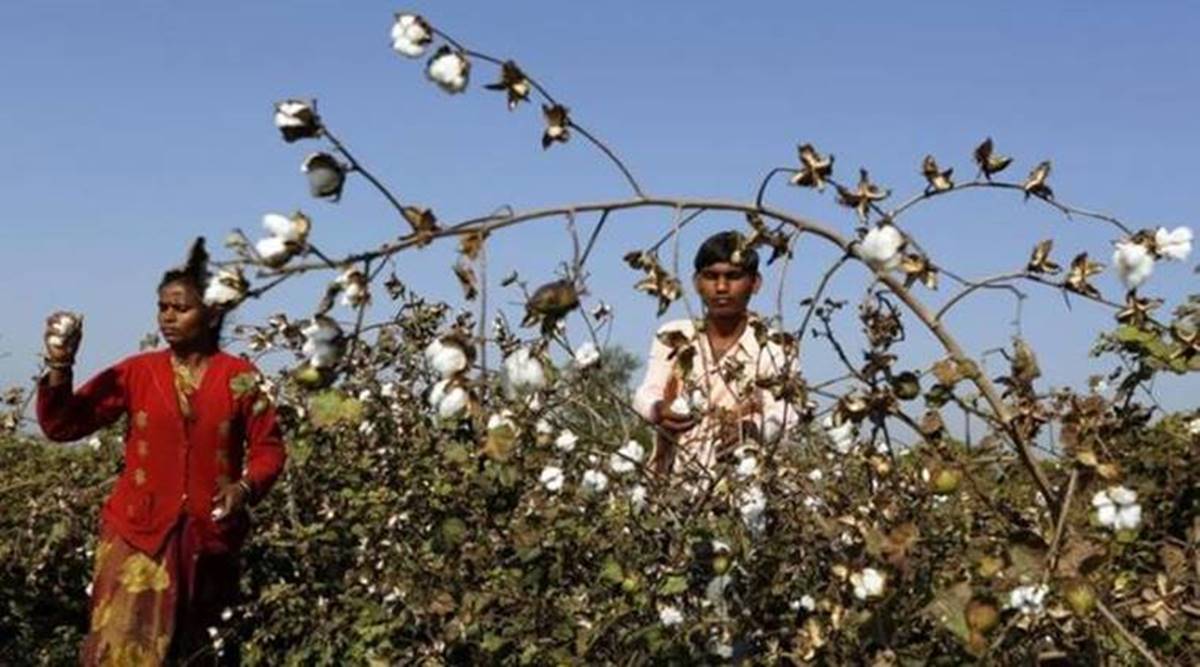
The Indian Express
In Punjab, private buyers of cotton come out in favour of Centre’s ordinance
They argue that if the state government will not go by Farmers’ Produce Trade and Commerce (Promotion and Facilitation) Ordinance, 2020 for purchase of cotton crop then farmers will suffer a loss of around Rs 300 to 400 per quintal of cotton.
by Anju Agnihotri ChabaWhile the Punjab government has passed a resolution against Centre’s farm ordinances by advocating that it will hit farmers hard especially the crops being purchased on MSP, but ahead of the arrival of Kapas (cotton with seed) crop in mandis, state’s ginners and spinning mill owners have come out in favour of Centre’s ordinance that dismantles the Agriculture Produce Marketing Committee (APMC) Act.
They argue that if the state government will not go by Farmers’ Produce Trade and Commerce (Promotion and Facilitation) Ordinance, 2020 for purchase of cotton crop then farmers will suffer a loss of around Rs 300 to 400 per quintal of cotton.
Apart from Cotton Corporation of India, the buyers in the state are private players, including ginners, who separate seed from cotton, and the spinning mills, who are main purchasers of cotton. CCI’s market share is not much in Punjab.
https://images.indianexpress.com/2020/08/1x1.png
Currently, the private buyers pay 4.5 per cent tax which includes 2 per cent mandi fee and Rural Development fund and 2.5 per cent to arhtiyas’s (commission agents) through which farmers sell their crop to ginners and spinners, who are now saying that why should they pay this tax when Centre has passed the ordinance and farmers can sell their crop to anyone outside the state government-owned mandi yard.
“If spinners and ginners have to follow the Punjab government’s directions we will end up paying 4.5 per cent tax and this tax actually is charged from the farmers because whatever extra tax is charged from the private buyer they pay that much money less to the farmers,” said a leading spinner.
Suresh Kumar, Managing Director of Punjab Spintex Limited, a Bathinda-based cotton yarn manufacturer and exporter said: “If farmers will sell directly to the purchaser he will get money close to the MSP, but if he will sell it through arhtiya in the mandi, the price he gets would be around Rs 5,000 per quintal”.
The Centre has fixed Rs 5,515 for medium staple (24.5 to 25.5 mm) cotton and Rs 5,825 for long-staple (29.5 to 30.5 mm) as MSP. In Punjab, mostly medium staple Kapas is grown. The main marketing season for cotton is from October to December.
“When the government is not purchasing cotton despite fixing its MSP, the farmers will have to sell it to the private players only and then the rate is also decided by the buyer as per the demand and supply formula,” said Bhagwan Bansal, president of the Punjab Ginners Association, who owns a ginning unit – S S Cotgin Pvt. Ltd – at Bathinda. Bansal’s unit can produce 150 bales of lint (one bale equals 170 kg) per day. He said that if government will not agree to our demands then the border area crop will be sold in Haryana and Rajasthan, not in Punjab. “This is because Haryana government cannot dare to go against the ordinance passed by Centre,” he said, adding that private buyers will protest if state government will not allow purchase without paying any mandi fee or arhtiya fee.
A small amount of the cotton had come to Fazilka Mandi last week where farmers sold it at the rate of Rs 4,801 per quintal which is below the MSP. The main crop will start arriving in the first week of October.